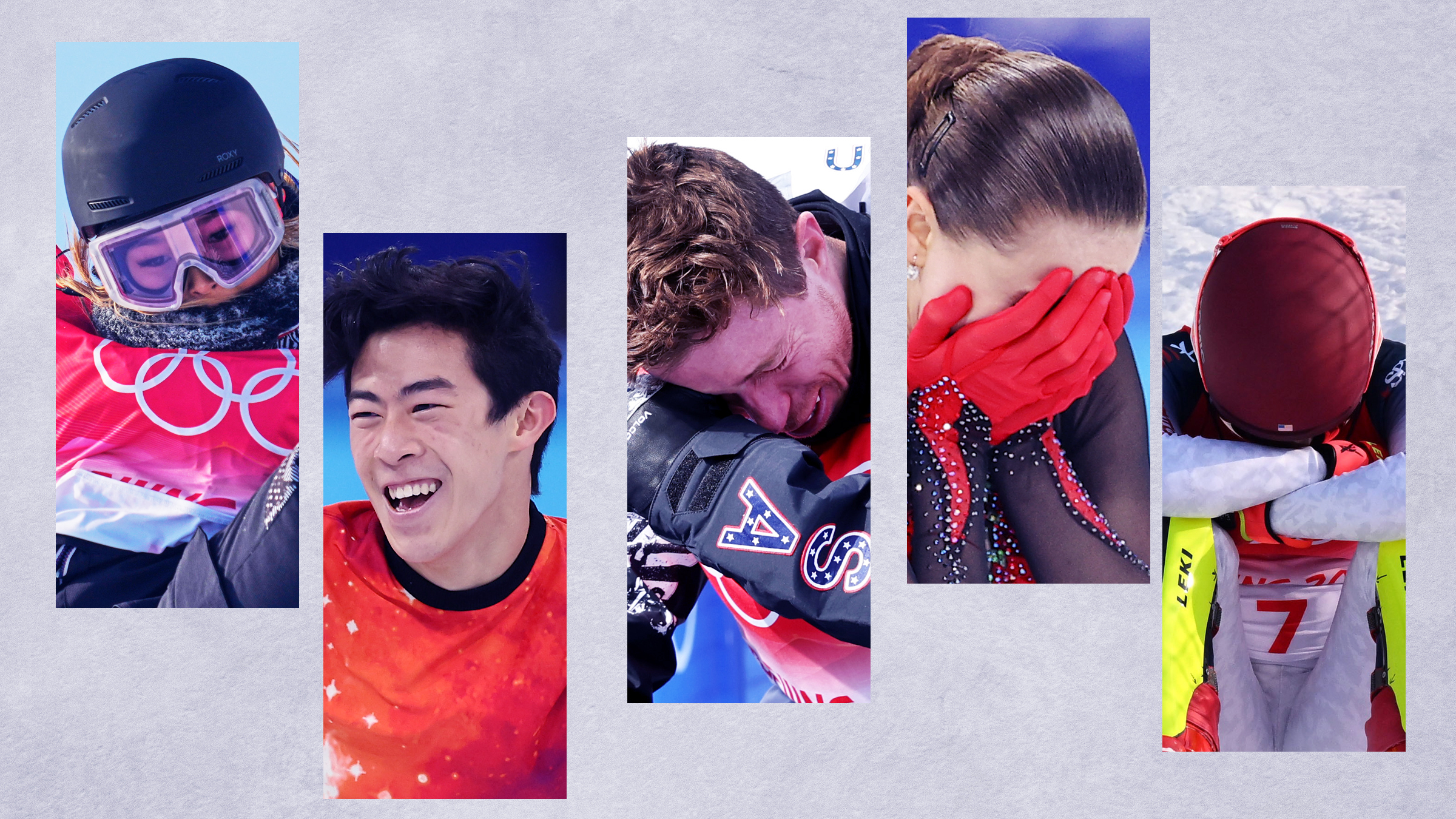Another figure skating medal is on the line Sunday as U.S. teams look for their spot on the podium in the ice dancing final.
Twenty-three pairs of skaters took the ice at Capital Indoor Stadium on Saturday morning. And boy did they execute.
Sunday's final will be a tight race for gold.
Here's what you should know:
Feeling out of the loop? We'll catch you up on the Chicago news you need to know. Sign up for the weekly Chicago Catch-Up newsletter here.
When and How Can You Watch Figure Skating in the 2022 Winter Olympics?
Figure skating began on Feb. 3 and runs through Feb. 19.
The first week of programming was entirely team events, while the second week features individual competition. Next up on the schedule is ice dancing's final, which will see notable U.S. duos returning to the ice for what they hope will be another figure skating medal.
Beijing 2022 Winter Olympics
Watch all the action from the Beijing Olympics live on NBC
Below is the full event and streaming information for each day of competition for figure skating.
|
Date/Time (ET) |
Event |
TV/Streaming |
|---|---|---|
|
Thurs | Feb 3 | 8.55 p.m. |
Team Event - Men's & Pairs SP, Rhythm Dance |
NBC | Peacock, NBCOlympics.com |
|
Sat | Feb 5 | 8:30 p.m. |
🏅 Team Event - Women's SP, Pairs FS |
NBC | Peacock, NBCOlympics.com |
|
Sun | Feb 6 | 8:15 p.m. |
🏅 Team Event - M/W FS, Free Dance |
NBC | Peacock, NBCOlympics.com |
|
Mon | Feb 7 | 8:15 p.m. |
Men's Singles Short Program |
NBC, USA | Peacock, NBCOlympics.com |
|
Wed | Feb 9 | 8:30 p.m. |
🏅 Men's Singles Free Skate |
NBC, USA | Peacock, NBCOlympics.com |
|
Sat | Feb 12 | 6:00 a.m. |
Ice Dance Rhythm Dance |
USA | Peacock, NBCOlympics.com |
|
Sun | Feb 13 | 8:15 p.m. |
🏅 Ice Dance Free Dance |
USA | Peacock, NBCOlympics.com |
|
Tue | Feb 15 | 5:00 a.m. |
Women's Singles Short Program |
USA | Peacock, NBCOlympics.com |
|
Thurs | Feb 17 | 5:00 a.m. |
🏅 Women’s Singles Free Skate |
USA | Peacock, NBCOlympics.com |
|
Fri | Feb 18 | 5:30 a.m. |
Pairs Short Program |
USA | Peacock, NBCOlympics.com |
|
Sat | Feb 19 | 6:00 a.m. |
🏅 Pairs Free Skate |
NBC | Peacock, NBCOlympics.com |
|
Sat | Feb 19 | 11:00 p.m. |
Exhibition Gala |
NBC | Peacock, NBCOlympics.com |
* TV networks reflect live events, times may differ for replays; check full schedule for detailed information.
Who Is in Medal Contention Heading Into the Final?
Team USA’s Madison Hubbell and Zachary Donohue, who are ranked No. 5 in the world, placed third in the rhythm dance. American teammates Madison Chock and Evan Bates, the No. 2-ranked team, finished one spot behind Hubbell and Donohue in fourth place.
USA’s Hubbell and Donohue, along with Madison Chock and Evan Bates, are considered the favorites to enter this event.
France’s Gabriella Papadakis and Guillaume Cizeron placed first with a score of 90.83. ROC’s Victoria Sinitsina and Nikita Katsalapov placed second with a score of 88.85.
ROC’s Alexandra Stepanova and Ivan Bukin secured fifth with a score of 84.09.
Team USA’s Kaitlin Hawayek and Jean-Luc Baker placed 11th with a score of 74.58.
What Is Ice Dancing?
Ice dancers perform their routine in the rhythm dance and free dance events. The rules prohibit them from doing any throw jumps, twist lifts, overhead lifts and other moves that skaters like Nathan Chen would do. Think ballroom dancing, but on ice. Skating partners are also not expected to separate for too long during their "no touch step sequence" as the rule states they shouldn't be more than two arms’ length apart.
What Are the Ice Dancing Moves to Watch for?
Belbin White, who was part of the first-ever U.S. ice dancing team to win a silver medal at the 2006 Olympics, told TODAY that the biggest moves in ice dancing are the twizzle, a pattern dance, lift, spin, step sequence and choreography.
“The ice dance event features two skaters working as a team to perform intricate maneuvers, steps, and acrobatics, all while staying in close contact throughout the program and with an emphasis on musicality and interpretation. Think ballroom dancing mixed with Cirque du Soleil, and you might get an idea of what to expect!” White told TODAY.
Twizzles, are considered "one of the most easily identifiable moves in ice dancing," according to NBC Olympics. They are a series of turns on one foot, in which skaters perform rotations quickly, side by side, preferably close to each other on the ice, though not touching. The weight remains on the skating foot, with the free foot in any position during the turn.
According to U.S. Skating, for all singles and pairs events and the free dance, judges award two marks: one for technical merit and one for program presentation.
"The technical merit mark expresses a judge’s evaluation of the quality of the required elements skated," the group states. "The presentation mark reflects a judge’s assessment of the program as a whole — its composition, originality, use of ice, skater’s style and expression of the music."
In addition to the technical score, each "program" is judged on five components: skating skills, transitions, performance, composition and interpretation of music.
The description of each component is as follows:
Skating Skills - Overall skating quality, including edge control and flow over the ice surface (edges, steps, turns, speed, etc.), clarity of technique and use of effortless power to accelerate and vary speed.
Transitions - The varied and/or intricate footwork, positions, movement and holds that link all elements.
Performance - The involvement of the skater physically, emotionally and intellectually in translating the music and choreography.
Composition - An intentional, developed and/or original arrangement of all types of movements according to the principles of proportion, unity, space, pattern, structure and phrasing.
Interpretation of Music - The personal and creative translation of the music to the movement on the ice.
How Is it Different From Pairs Skating?
Athletes in the pairs discipline compete in the same two events as individual skaters: short and free programs. They perform the moves that aren't allowed in ice dancing. The main elements include difficult moves like the twist lift, in which the male athlete lifts his partner over his head, tosses her in the air as she rotates and he catches her.
Throw jumps are also extremely common. It's the maneuver in which the male skater throws his partner in the air, and she lands unassisted on a backward outside edge.




